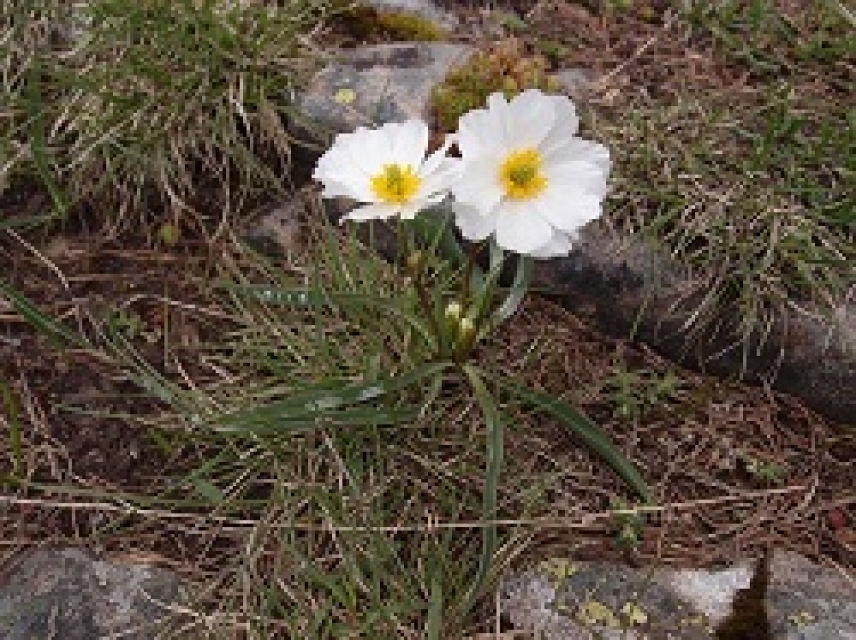
This research team has spent several years gathering information and contrasting different databases on location and distribution of the species, which when crosschecked with climate references (humidity, exposure to sunlight or temperature, among others) provide an explanation as to why Ranunculus kuepferi spread the way it did throughout the Alps. According to phylogenetic studies, buttercups survived the last ice ages (circa 21,000 years ago) in the western most zone of the Alps and started spreading toward the east about 10,000 years ago. However, only some of them were able to reach the eastern part of the mountain range. Those specimens that did were those that reproduce parthenogenetically, that is to say, by generating new plants that did not need to be fertilized. As a general rule, this fact alone could be understood as an evolutionary advantage: asexual buttercups have an increased ability to colonize new areas. Nevertheless, the work Nieto Lugilde has carried out over the last few years sought to confirm this idea by cross-referencing information on the spread of herbaceous plants with forest cover of the different Alpine regions registered on satellite images. In this way, the aim was to find out how the spread of these small flowers was affected by their coexistence with the big trees that make up the Alpine forests. The conclusions, published in the journal Ecology Letters, were based on a simulation model and suggest variety of causes. These causes go beyond the obvious instinct of any species that not needing another individual in order to reproduce is simply more advantageous. The first cause has to do with the fact that asexual individuals develop better at lower temperatures, which makes them able to survive in harsh conditions at even lower temperatures and also at higher altitudes. Furthermore, the study confirms that sexual specimens have to compete with big trees in the eastern part since they live at lower altitudes. All of this allows them to scatter better throughout the mountain range. Adaptations of asexual specimens have thus been the key to their widespread distribution up high in the European mountains.
Kirchheimer, B; Wessely, J; Gattringer, A; Hulber, K; Moser, D; Schinkel, CCF; Appelhans, M; Klatt, S; Caccianiga, M; Dellinger, A; Guisan, A; Kuttner, M; Lenoir, J; Maiorano, L; Nieto-Lugilde, D; Plutzar, C; Svenning, JC; Willner, W; Horandl, E; Dullinger, S. Reconstructing geographical parthenogenesis: effects of nichedifferentiation and reproductive mode on Holocene range expansion of an alpine plant. ECOLOGY LETTERS. 10.1111/ele.12908.


